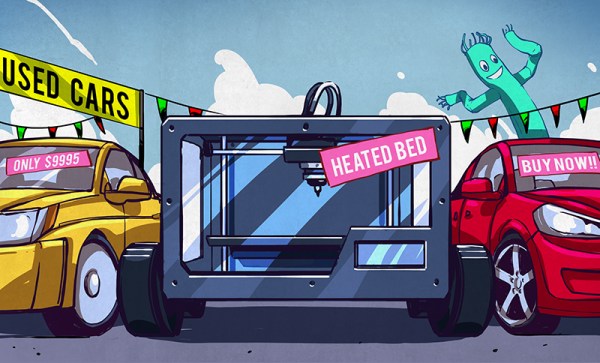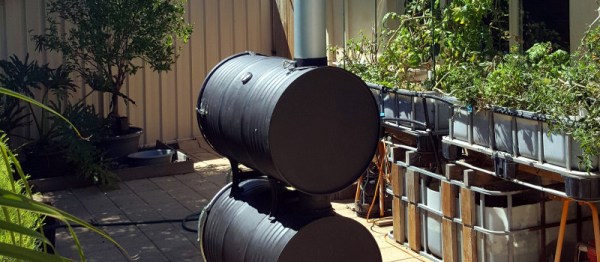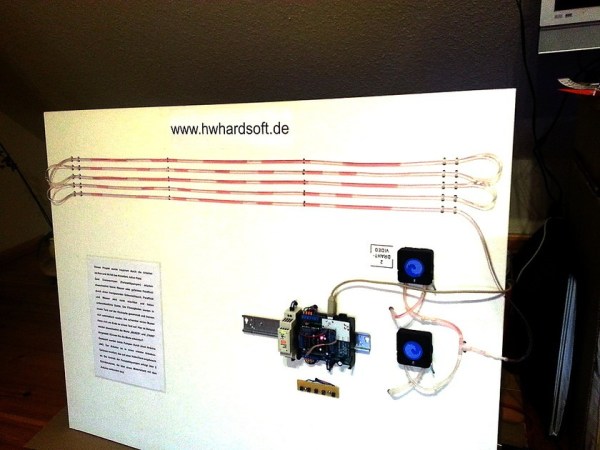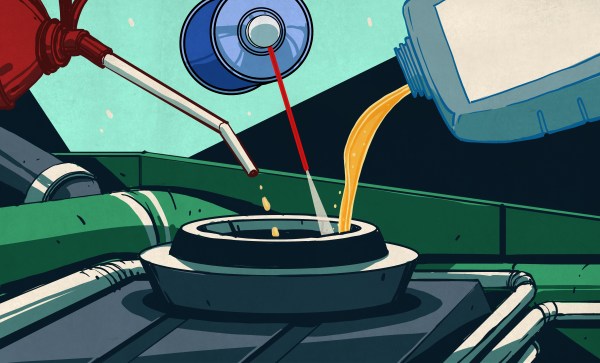On the face of it, keeping fluids contained seems like a simple job. Your fridge alone probably has a dozen or more trivial examples of liquids being successfully kept where they belong, whether it’s the plastic lid on last night’s leftovers or the top on the jug of milk. But deeper down in the bowels of the fridge, like inside the compressor or where the water line for the icemaker is attached, are more complex and interesting mechanisms for keeping fluids contained. That’s the job of seals, the next topic in our series on mechanisms.
oil17 Articles
You Got A 3D Printer, Now What?
Given the incredibly low prices on some of the models currently on the market, it’s more than likely a number of Hackaday readers have come out of the holiday season with a shiny new desktop 3D printer. It’s even possible some of you have already made the realization that 3D printing is a bit harder than you imagined. Sure the newer generation of 3D printers make it easier than ever, but it’s still not the same “click and forget” experience of printing on paper, for instance.
In light of this, I thought it might be nice to start off the new year with some advice for those who’ve suddenly found themselves lost in a forest of PLA. Some of this information may seem obvious to those of us who’ve spent years huddled over a print bed, but as with many technical pursuits, we tend to take for granted the knowledge gained from experience. For my own part, the challenges I faced years ago with my first wooden 3D printer were wholly different than what I imagined. I assumed that the real challenge would be getting the machine assembled and running, but the time it took to build the machine was nothing in comparison to the hours and hours of trial and error it took before I gained the confidence to really utilize the technology.
Of course, everyone’s experience is bound to be different, and we’d love to hear about yours in the comments. Grand successes, crushing defeats, and everything in between. It’s all part of the learning process, and all valuable information for those who are just starting out.
Oil Barrel Smoker
What would you do with a pair of oil drums and a craving for delicious food? Like any sane person, redditor [Kilgore_nrw] made the logical choice and built a smoker.
To make the build easier, he picked up a double barrel stove kit which came with a door, hinges, legs 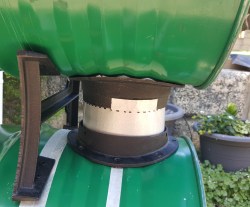 and flue connectors. While fixing the legs and mounting the stove door — high enough for a bed of bricks in the fire barrel — went as planned, he had to improvise the installation of the smoke flue. It ended up being the exact same diameter as the flue connectors, but notching it enough to slide into place made a satisfactory seal.
and flue connectors. While fixing the legs and mounting the stove door — high enough for a bed of bricks in the fire barrel — went as planned, he had to improvise the installation of the smoke flue. It ended up being the exact same diameter as the flue connectors, but notching it enough to slide into place made a satisfactory seal.
Not liking the look of having the stack at the ‘front’ of the smoker, he mounted it above the flue at the rear and added two sandstone slabs in the smoking chamber to evenly distribute the heat. Finishing touches included heavy duty drawer slides for the cooking rack — ensuring easy access to deliciousness — and painstakingly grinding off the old paint to apply a new heat resistant coating. For any fans out there, the finished pictures are a sight to behold.
Paraffin Oil And Water Dot Matrix Display
In preparation for Makerfaire, [hwhardsoft] needed to throw together some demos. So they dug deep and produced this unique display.
The display uses two synchronized peristaltic pumps to push water and red paraffin through a tube that switches back over itself in a predictable fashion. As visible in the video after the break, the pumps go at it for a few minutes producing a seemingly random pattern. The pattern coalesces at the end into a short string of text. The text is unfortunately fairly hard to read, even on a contrasting background. Perhaps an application of UV dye could help?
Once the message has been displayed, the water and paraffin drop back into the holding tank as the next message is queued up. The oil and water separate just like expected and a pump at the level of each fluid feeds it back into the system.
We were deeply puzzled at what appeared to be an Arduino mounted on a DIN rail for use in industrial settings, but then discovered that this product is what [hwhardsoft] built the demo to sell. We can see some pretty cool variations on this technique for art displays.
Continue reading “Paraffin Oil And Water Dot Matrix Display”
Beyond WD-40: Lubes For The Home Shop
If your shop is anything like mine, you’ve got a large selection of colorful cans claiming to contain the best and absolutely only lubricant you’ll ever need. I’ve been sucked in by the marketing more times than I care to admit, hoping that the next product will really set itself apart from the others and magically unstick all the stuck stuff in my mechanical life. It never happens, though, and in the end I generally find myself reaching for the familiar blue and yellow can of WD-40 for just about every job.
Retrotechtacular: Pipeline To The Arctic
They said it couldn’t be done, and perhaps it shouldn’t have been attempted. Shouldas and couldas aside, the oil crisis of the 1970s paved the legislative way for an 800-mile pipeline across the Alaskan frontier, and so the project began. The 48-inch diameter pipe sections would be milled in Japan and shipped to Alaska. Sounds simple enough. But of course, it wasn’t, since the black gold was under Prudhoe Bay in Alaska’s North Slope, far away from her balmy southern climes.
The Trans-Alaska Pipeline System was constructed in three sections: from Valdez to Fairbanks, Fairbanks to a point in the Brooks Pass, and south from Prudhoe Bay to the mountain handoff. Getting pipe to the Valdez and Fairbanks is no big deal, but there is no rail, no highway, and no standard maritime passage to Prudhoe Bay. How on earth would they get 157 miles worth of 58-foot sections of pipe weighing over 8 tons each up to the bubblin’ crude?
Oil Feed Retrofit For A CNC Mill Starting To Come Together
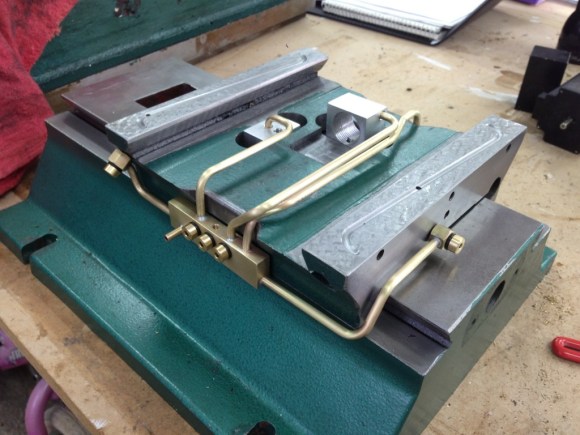
Here is the first real fruit of [Joel’s] labor on his oiling system for a CNC mill. Regular readers will remember hearing about his quest to go from a manual mill to a CNC version. As part of the overhaul he decided to add a system that can dispense oil to the different wear parts on the machine. We first looked in on the project when he showed off the pipe bender he built for the task. Now that he has that at his disposal he was able to route tubing to many of the parts.
The system starts with a central brass manifold which is pictured in the foreground. Each pipe was bent and cut to reach its destination with a minimum of wasted space. After a test fit showed good results he brazed the pieces together using silver solder. Each of the ball nuts have been drilled out so that oil will be injected onto the threads of the ball rod. Three input ports on the manifold will eventually let [Joel] connect the oil injection system via flexible tubing.


